How did the Greeks Measure the Earth’s Circumference?
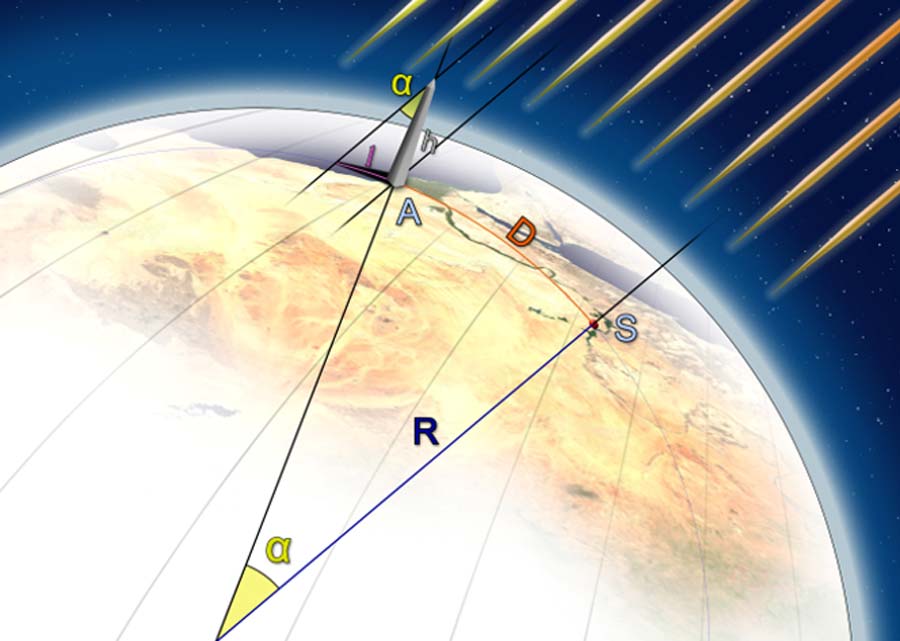
It is considered obvious today that Earth is roughly a sphere and that it can be measured like any spherical object. Scientists technically call it an oblate spheroid, but it is still sphere-like in its shape. In the ancient world, this was not as obvious. The idea that Earth is spherical only became common knowledge about 2,500 years ago. That is when philosophers began to think about the shape of Earth and its dimensions. When philosophers began to think of Earth as spherical, however, a new question emerged. What is its circumference?
Deductive Reasoning and the Emergence of Science
Ancient cultures do not appear to have taken as much of an interest as modern scientists in measuring and quantifying the world and answering physical problems, such as calculating the Earth’s circumference. The ancients were certainly smart enough to determine the proper shape of the Earth and determine its circumference, but those questions about the physical nature of the world do not seem to have interested them.
They appear to have been more interested in using their intelligence to solve practical problems such as irrigating fields and building monumental tombs. There may have been people within those cultures that did take an interest in the physical nature of the world for its own sake, but they do not appear to have gained prominence in those cultures, or to have been celebrated.
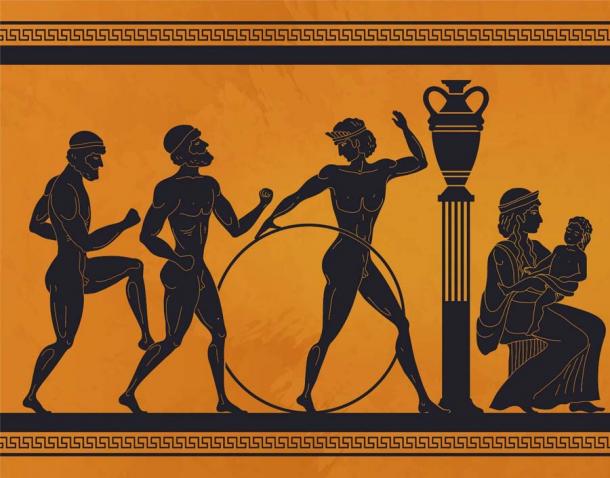
Ancient Greek culture saw a flourishing of science and mathematics ( SpicyTruffel / Adobe Stock)
One of the first cultures to value the study of the natural world for its own sake was that of the ancient Greeks. There was certainly scientific study before the ancient Greeks, but it is primarily from the ancient Greek tradition that Western science and the quantitative study of Earth’s dimensions, including its circumference, emerged.
Thales and Anaximander
The first figure to think scientifically about the world in the Greek tradition appears to have been Thales of Miletus (624-547 BC). The life and work of Thales are shrouded in legend. He was a native of Miletus, though some ancient authors apparently believed that he was Phoenician. He was an engineer by trade, but he is said to have studied mathematics in Egypt.
It is also said that he predicted a solar eclipse in 585 BC, measured the height of the pyramids, and contributed to important proofs in geometry. How much of these claims are true is uncertain, but most historians agree that he was the first Greek philosopher to give rational explanations for natural phenomena rather than supernatural explanations.
For example, Thales is said to have explained earthquakes by saying that the Earth floated on an infinite ocean, and that sometimes waves in the ocean caused the ground to shake. Although we know this to be wrong today, it was nonetheless significant as an attempt to explain earthquakes without invoking the direct actions of gods. Thales’ pupil, Anaximander (c. 611-545 BC), is said to have taken his teacher’s ideas one step farther and created the first Western cosmology based on rational explanation.

Thales and Anaximander (Unknown Author / Public Domain ; Sanzio 01.jpg / Public Domain )
Anaximander taught that the disks of the sun and moon were the result of vents in the sky through which a luminescent substance shined. He explained the world as coming into existence out of a formless state which he called the “ apeiron”. He also believed that eventually the world would be destroyed and dissolve back into the apeiron. Furthermore, he taught an early form of evolution, believing that humans had somehow originated from another creature, possibly a fish.
Despite their insightful approach in using rational reasoning to explain the world they saw, which led eventually to the rise of modern science, they both believed that Earth was a flat disk. Thales believed that Earth was a flat disk that floated on a cosmic ocean. Anaximander taught that Earth was a flat cylinder floating in a void which was equidistant from other objects in the universe.
Also, although they believed that the shape of the Earth could be rationally delineated, they do not appear to have tried to quantify it or determine its dimensions, including its circumference. The first people to believe that Earth was spherical in the Greek tradition do not even appear to have believed in Earth’s sphericity for entirely rational reasons, or at least not any that were supported by evidence.
The First Round Earthers
Pythagoras (570-490 BC) is an important figure, known for having laid down many of the foundations of Western thought. He is also credited with the Pythagorean theorem, even though evidence for the attribution is dubious at best.
- The Golden Thread of Time: A Quest for the Truth and hidden knowledge of the Ancients
- Flat Wrong: The Misunderstood History of Flat Earth Theories
As a young man, Pythagoras studied under Thales and Anaximander. He is also said to have studied in Egypt with Egyptian priests and in Babylon. Many divine powers are also attributed to Pythagoras by later authors. One reason he is a mysterious figure is that his followers were sworn to secrecy, meaning that very little about his life was revealed.
After about 518 BC, Pythagoras founded a philosophical school in Croton, a town in southern Italy. Members in the inner circle of this society lived together, were required to be vegetarian, and were not allowed to own physical possessions. The beliefs of the society included the idea that reality is inherently mathematical. It was probably in this context that Pythagoras taught that the Earth was spherical. This was however likely more related to mystical ideas about the geometric properties of the sphere rather than scientific observations made by Pythagoras and his followers.
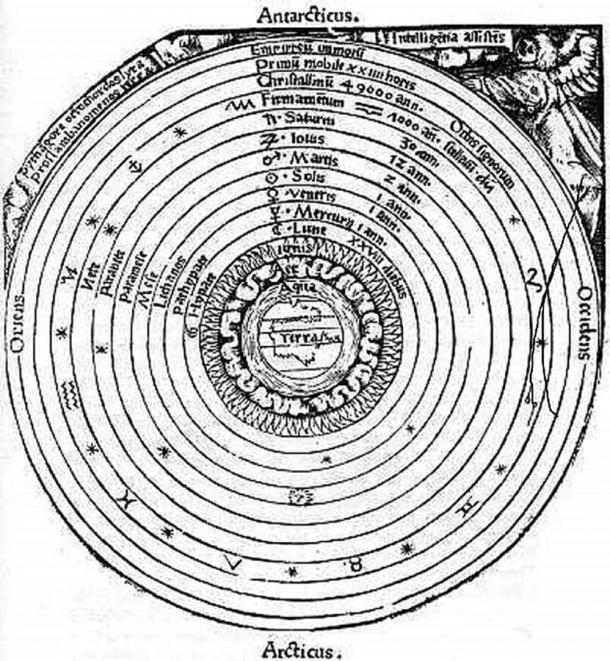
Aristotle’s model of the universe (Unknown Author / Public Domain )
The Pythagorean school, however, influenced Plato (c. 428-348 BC) who in turn influenced Aristotle (384-322 BC). Aristotle believed that the Earth was spherical and that it was at the centre of a universe composed of concentric spheres. Aristotle is known for having been a polymath, having made contributions to fields as diverse as astronomy, physics, ethics, political science, logic, and biology. His widespread pre-eminence as an intellectual and philosopher led to him becoming the dominant authority on many of these topics for much of the following two millennia.
Because of the entrenchment of Aristotle’s teachings, the idea of a spherical Earth became the dominant view in the West. Now that Earth’s shape was established as something that could be known, it could also be measured and quantified. Aristotle not only taught that Earth was spherical but also mentioned early estimates of Earth’s circumference.
Mathematicians of his time had estimated Earth’s circumference to be “400,000 stadia”, or 62,880-66,680km (39,000-41,500 miles), depending on how stadia are converted to modern metric units. This value is about 20,000-25,000km (12,500-15,500 miles) off from the actual value based on modern measurements.
Eratosthenes of Cyrene
Although mathematicians at the time of Aristotle had estimated Earth’s circumference, it is not known how they estimated it, or if they attempted to directly measure it. The first person in the Western tradition to have figured out how to measure the circumference of the Earth was Eratosthenes of Cyrene (276-194 BC). Eratosthenes studied under Lysanias of Cyrene and Ariston of Chios. He also is said to have studied in Athens for several years. His career was given a major push when he studied under Callimachus.
Callimachus had been chosen as the 2nd librarian of the famous library at Alexandria by the Ptolemaic ruler, Ptolemy II Philadelphus. It is possibly because of this connection to Callimachus that Eratosthenes was invited to Alexandria by the successor of Ptolemy II Philadelphus, Ptolemy III Euergetes, to tutor his son Philopator. Eratosthenes came to Alexandria after 245 BC and became the 3rd librarian in 240 BC, after Callimachus died.

Eratosthenes (L) teaching in Alexandria (mark6mauno / CC BY 2.0 )
Eratosthenes is known for having produced several works on mathematics. He is most famous, however, for his contribution to measuring the circumference of the Earth which he described in his now lost work, On the Measurement of the Earth .
Measuring the Circumference of Earth
Eratosthenes noticed that on the summer solstice in Syene (modern-day Aswan, Egypt) the sun was directly overhead. In Alexandria, on the same day and at the same time, however, the sun would not be directly overhead. How could the sun be at different positions in the sky at different locations at the same day and time?
Eratosthenes assumed that the sun was distant enough that its rays would essentially be parallel to each other when they hit the Earth’s surface. If the sun’s rays were parallel, any angular difference in the sun’s position at different latitudes could only be due to the Earth’s curvature. Based on this knowledge, Eratosthenes was able to measure the Earth’s circumference.
First, he determined the angular difference between the sun’s position at Syene on the summer solstice versus the sun’s position at Alexandria on the same day. Eratosthenes determined that this angular distance was 7° 12’, though Eratosthenes described it as “the fiftieth of a circle”.
Since the angular difference between the sun’s position on the summer solstice between Syene and Alexandria is a fiftieth of a circle, he reasoned that the distance between the two cities (about 800 km or 500 miles) must be a fiftieth of Earth’s total circumference. Based on this estimation, Eratosthenes calculated Earth’s circumference to be 250,000 stadia.
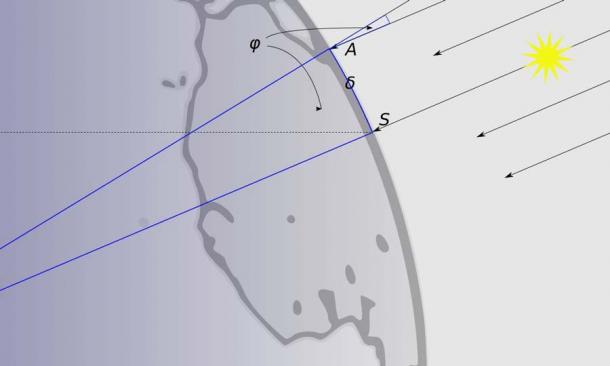
Eratosthenes’s calculations between Alexandria (A) and Syene (S) (Erzbischof / CC BY-SA 3.0 )
The length of a single stadium has been estimated to be between 157-167m (516-547ft), depending on which source is used. Based on these conversions, Eratosthenes’s estimation of the circumference of Earth would be either 39,300km or 41,675km (24,419 or 25,896 miles). These values are not far off from the modern estimate of the equatorial circumference of the planet (40,075km, 24,901 miles).
His measurement is also not too far from the polar circumference of the planet. Since the Earth is not exactly spherical, the Earth’s circumference is slightly greater if measured along the equator than if it is measured pole to pole. The polar circumference of the Earth is 40,007km (24,859 miles). For comparison, the Moon has a circumference of 10,921km (6,786 miles) and Jupiter has a circumference of about 500,000km (310,686 miles).
Eratosthenes’s Legacy
There is some debate on the true accuracy of Eratosthenes’ measurement. The only measurement he made himself was probably the angular distance between the sun and the zenith on the summer solstice in Alexandria. Nonetheless, historians agree that Eratosthenes’ calculation of Earth’s circumference was very accurate, given the resources that he had at the time.
Eratosthenes is the first recorded person to be able to determine the circumference of the Earth with any accuracy. He made this estimate without any calculators or satellites. That he was able to do this with little or no technology reveals the power of human ingenuity. Eratosthenes also made his calculation at a time when most of the world probably still believed that Earth was flat.
Calculating the circumference of the Earth is trivial today, but it represents one of the great intellectual achievements of the human species. It is on par with the fact that humans have been able to determine the age of the Earth. Like the age of the Earth, the circumference of the Earth is of a scale far beyond everyday human experience and yet humans, with their mammalian brains adapted to survive and escape predators rather than unravel the secrets of the universe, were able to measure it.
Ancient Debunkers and Flat Earthers Today
Another reason that Eratosthenes’s measurement is important today is that there is a small but vocal movement that denies that Earth is spherical, or even spheroidal, and insists that Earth is actually flat. They insist that we have been wrong about the shape of the Earth for 2,500 years. Flat Earthers also claim that satellite images do not count as evidence for Earth being roughly spherical in shape because they could have been doctored by NASA or the government.
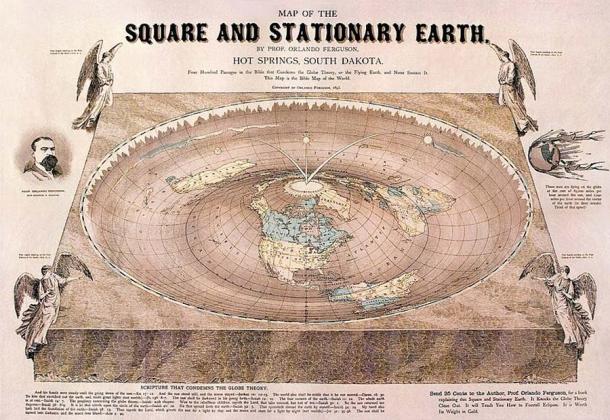
The possibility of a non-spherical Earth remains a fringe theory to this day (Orlando Ferguson / Public Domain )
In this modern age of growing distrust towards experts even when it comes to ideas as basic as the shape of the planet, Eratosthenes’s measurement gains new significance for responding to the flat Earth conspiracy theory. Eratosthenes lived millennia before NASA or satellites. He was able to calculate the circumference of the Earth using little more than the position of the sun and his capacity for deductive reasoning.
The phenomenon that Eratosthenes observed makes the most sense if the Earth’s surface is curved. If Earth were flat, the apparent position of the sun in the sky would be the same at any location on Earth at a given time of day. Since it is curved, however, the sun’s rays will strike the Earth’s surface at different angles depending on latitude, and the sun’s position in the sky will differ as a result.
It could be argued that Eratosthenes’s observations do not necessarily prove that Earth is spherical, but they do strongly imply a spheroidal shape. Other explanations could be made for this that are consistent with a flat Earth, but the simplest explanation is that Earth’s surface is curved. This conclusion is more consistent with a spheroidal shape than a disk shape.
Most people are not in any doubt that Earth is in fact spheroidal in shape and not a flat disk. For any who doubt, however, the measurements of Eratosthenes represent a clear and repeatable demonstration based on the fact that the sun appears at different positions in the sky on the same day and time depending on latitude. This fact is best explained if Earth has a curved surface. It suggests that modern science has not been made up by governments or corporations but is based on observable facts about the natural world. Which is what scientists have been saying all along.
Related Post
A shocking documentary proves that mermaids do exist
SHOCKING Revelation: Thuya, Mother of Queen Tiye, Was the Grandmother of Akhenaten and Tutankhamun—What Ancient Egyptian Secrets Did She Leave Behind?
Breaking News: Astonishing Discoveries at Karahan Tepe Confirm an Extraterrestrial Civilization is Hiding on Earth, and NO ONE Knows!
Breaking News: Researchers FINALLY Discover U.S. Navy Flight 19 After 75 Years Lost in the Bermuda Triangle!
NASA’s Secret Investigation: Uncovering the Astonishing Mystery of the UFO Crash on the Mountain!
Explosive UFO Docs LEAKED: Startling Proof That Aliens Ruled Ancient Egypt!